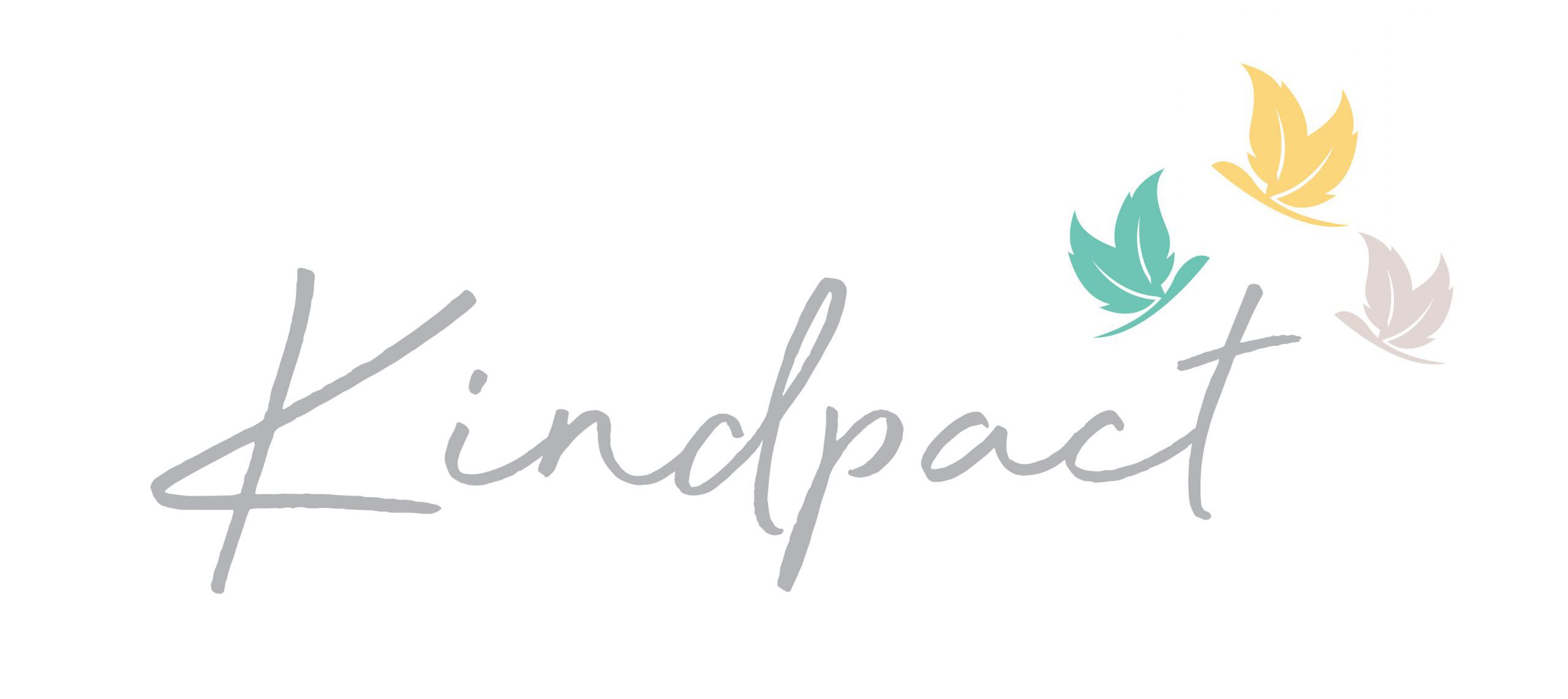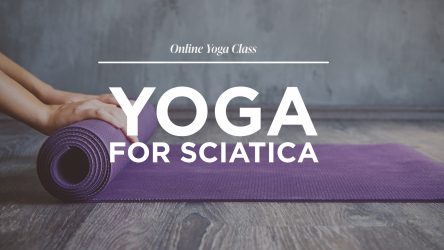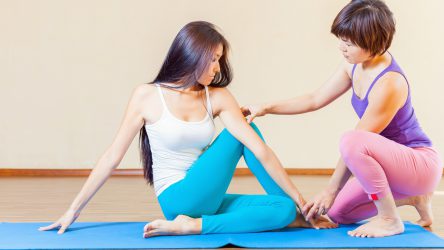Bicycling is awesome. You get to be outside, taking in prana as you breathe fresh air, move your body and propel yourself through space on two wheels. Cycling saves money on gas, parking, and bus fare, and depending on where you live, it can get you to where you need to be just as, if not more, quickly. It’s good for you, the environment, and helps cut down on traffic- there’s really nothing not to like.
As with any activity that requires repetitive movements, cycling stresses specific muscle groups and joints in the body. Here is a 15-minute yoga routine with a selection of yoga-inspired stretches you can do to avoid strain and assist with recovery. This sequence is great to practice post cycling or on off days.
Neck Mobility Rolls and Stretches
Practicing yoga postures that target your neck and shoulders allows you to look over your shoulder to see behind you. It also helps counter the tilted back head position cycling often creates.
- Start by standing in Tadasana (Mountain Pose) with your feet about two fist-widths apart. Lift and spread your toes wide, then press down through the toes, heels and outer edges of both feet as you lift through the arches. Continue that lift up the inseam of the leg, isometrically pressing your legs away from one another. Draw your low belly and navel towards your spine and feel your core engage. Grow tall through the roof of your mouth, spine coming into alignment; lift your heart slightly and draw your low ribs in. Rotate the head of your arms so that the inner elbow crease and palms face forward, creating some space across the front of the chest and shoulders; invite the shoulders to soften. Let your chin to float level with the floor and gaze straight ahead.
- Keeping the head’s alignment, slowly turn your head towards your right shoulder. Pause, and take 3 long inhales and exhales, then slowly come back to center.
- Now turn your head to look out to your left, being mindful that the head is not tilting backward or forward. Take three long inhales and exhales here and then come back to center.
- Bring your hands behind your sacrum or low back and interlace your fingers. If this is not available to you, keep your arms as in Tadasana or bring them to your waist with elbows out to the sides.
- Draw the chin back slightly (yes, this will likely create a lovely double or triple chin- your cervical spine will thank you for the alignment!) and bring your right ear towards your right shoulder. Keep the shoulder soft and down, rather than allowing it to rise up to meet the ear.
- Inhale here, then as you exhale, slowly roll the chin down towards the chest, moving to center. Pause in center for the inhale, and as you exhale, bring the chin back up to level.
- Repeat to the left: draw the chin back, bring the left ear towards left shoulder, exhale to gently roll to center, pause to inhale, exhale back up. Repeat this three times on each side for a total of four.
- After repeating, take a few fluid rolls of the head side to side, moving in one direction and then the other. Here you might allow the head to tilt back slightly, bringing your gaze toward the sky as you roll to each shoulder.
Postures to Open the Shoulders and the Chest
Practicing postures that open the shoulders and the chest counters the typical forward hunching cycling posture and helps with mobility to properly make hand signals.
Cactus Arms Against a Wall
- Start by standing with your back against a wall and stretch both arms out into a T shape, palms faced forward. Your left arm is now in a position that indicates, “I’m about to turn left!”
- Bend your elbows to bring your arms into a cactus, or goal post, shape- elbows should be level with shoulders. Your left arm is now in a position that indicates “I’m making a right turn!”
- Keeping your upper arms and elbows against the wall, rotate to bring your forearm and palms to float parallel to the floor.
- Pause, then stretch your arms out straight ahead, level with shoulders and palms facing down. Pause and then rebend the elbows, drawing the upper arms back against the wall.
- Continue rotating to bring the forearms and palms to press down towards the wall. They may or may not touch- either is totally ok! Your left arm is now in the position that indicates, “I’m slowing down or stopping!”
- Pause here for a breath, and then rotate the arms back up, bringing the backs of the hands to touch the wall again.
- Repeat 4 times, for a total of 5.
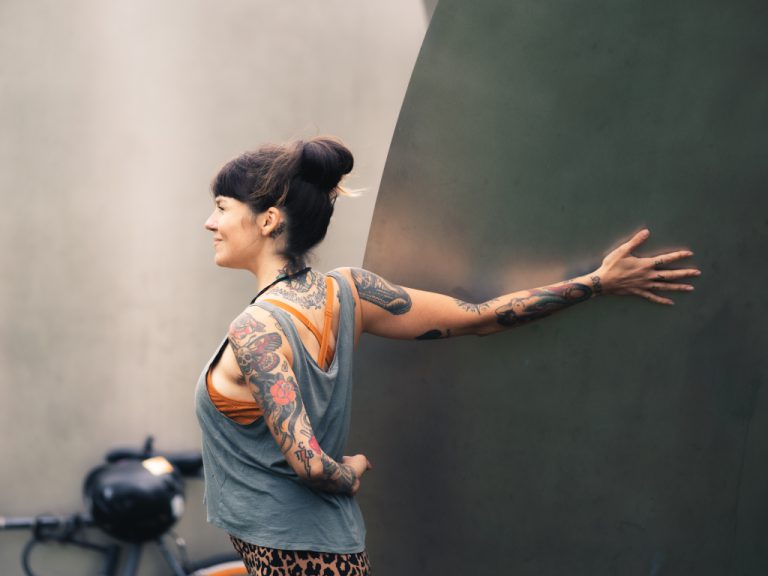
T Stretch Against the Wall
- Turn to stand so that the wall is alongside you to your right.
- Turn your torso towards the wall and stretch your arms out into a T; right palm flat against the wall; arm straight and in line with your shoulder. Turn your head to bring your right cheek against the wall.
- Allow your left hand to slide down along the wall as you step your left foot behind the right and turn your torso towards perpendicular with the wall. Your left hand can stay on the wall or come down by your side.
- Keep your right arm and hand pressing into the wall; stay here for several breaths, stretching into the right shoulder and pectoral muscle.
- Release and repeat on the left.
If you feel open and want to intensify the stretch, bring your back arm into the cactus shape and move from there. Be mindful of sensation and if this brings any nerve twinges, return to the straight-armed version!
Prasarita Padottanasana C Variation
- Start in Tadasana and step your feet about another two fist’s width wider.
- Bring your hands to meet behind your low back and interlace your fingers.
- Keeping the palms together as much as possible, begin to draw your hands down and away from your low back.
- You should feel your shoulder blades squeeze together and slide slightly down, keeping your shoulders from jutting up towards your ears.
- Lift the heart and broaden across the chest. Stay here, gaze lifted, or fold forward, maintaining the integrity of the chest and shoulders.
- Stay for several breaths, then release.
- Repeat for a total of 3 times. Try changing out the interlace of your hands each time, bringing the non-dominant clasp.
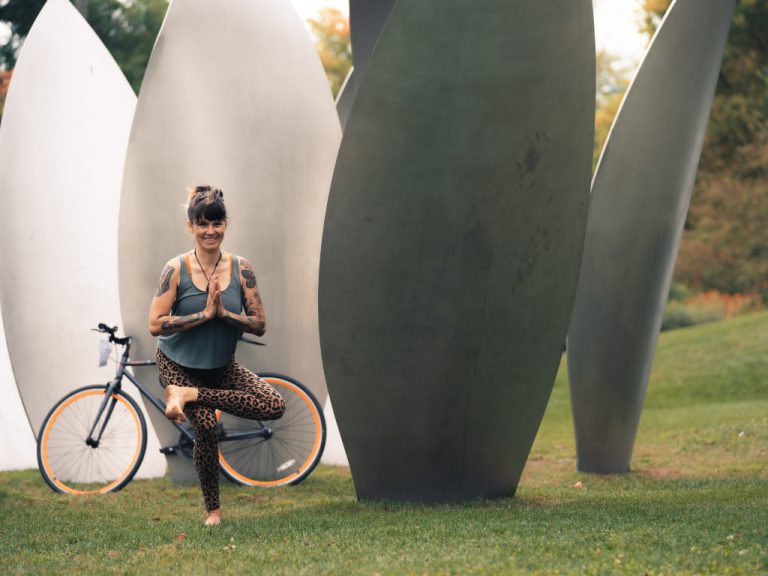
Standing Figure Four
To help build strength and stability through legs, hips, and core while stretching the hips and the glutes try Standing Figure Four pose.
- Start in Tadasana
- Shift your weight onto the left foot, bend the knee slightly and cross your right ankle over your left thigh, just above the knee, making a “4” shape with your legs.
- Slowly deepen the bend in the standing leg, bringing the hips back and the torso forward, as though you were sitting down onto a chair.
- Hold here for 10 breaths, then gently come to standing, release, and repeat on the other side.
If you find it overly challenging to balance, you can do this standing next to the wall or a chair.
Seated Twists
Yoga postures that incorporate twists help give mobility to look behind you while cycling. Sitting cross-legged helps to open the hips, which can tighten with regular riding.
- Come into a cross-legged seated position. You might sit up on a block or folded blanket to elevate your hips. If cross-legged isn’t available to you, find a way of sitting that is. Allow your seat to be solid and grow tall through your spine. Soften your shoulders down away from the ears.
- Inhaling, sweep the arms up overhead; exhaling, bring your left hand behind you and your right hand across the left knee.
- Stay in the twist for several rounds of breath:
- As you breathe in, root down into your seat and grow tall through the spine.
- As you breathe out, stay or possibly move deeper into the twist.
- If it feels correct in your neck, turn to look back over your left shoulder.
- Unwind back to center, pause, and repeat, this time turning to the right.
- After coming back to center again, if you are sitting cross-legged, switch out the cross of your legs so that the non-habitual leg is in front. This will likely feel a bit wonky but invites us to help find more balance between the sides of the body!
- Begin to move dynamically:
- Inhale to sweep the arms up; exhale to twist to the left. Release back to center.
- Inhale the arms up; exhale to twist right. Release back to center.
- Inhale arms up; exhale to twist left.
- Repeat, alternating sides evenly for about ten rounds of breath.
Wrist Postures
Wrist and hand movements to help to counter flexion and gripping experienced during cycling.
- Extend your arms straight out in front of you, palms facing down.
- Stretch your fingers wide, then draw them in to make loose fists.
- Tilt your fists down, feeling a stretch across the tops of the wrists into the forearms, and hold here for a few breaths.
- Make circles with your wrists, rotating several times in one direction and then the other.
- Bring the wrists back to neutral, arms outstretched, and begin making motions with your fingers as though you were flicking water off of them.
- Keep doing this, rapidly, as you move your arms out into a T, then overhead, then sweep down by your side… back out forward, then up… try to keep this going for at least a count of 30! Then shake it out.
Ankle Extensions and Rolls
To counter the constant flexion from pushing the pedals while bicycling, practice these to help bring the ankles in balance.
- Stretch your legs out straight in front of you, legs wide enough apart that your feet can roll towards each other without bumping each other. It may be helpful to sit on the edge of a folded blanket to keep the pelvis from tipping backward.
- Bring your hands back beside and slightly behind your hips; come to tented fingertips with fingers pointing back and thumbs pointing out away from your body.
- Gently bend your elbows, press into your hands and lift your chest as you draw your shoulder blades towards one another and down.
- Point your toes away from you, stretching into the front of the ankle. Relax, and then point again.
- Repeat this several times and then make circles with your feet, rolling at the ankle, in one direction and then the opposite.
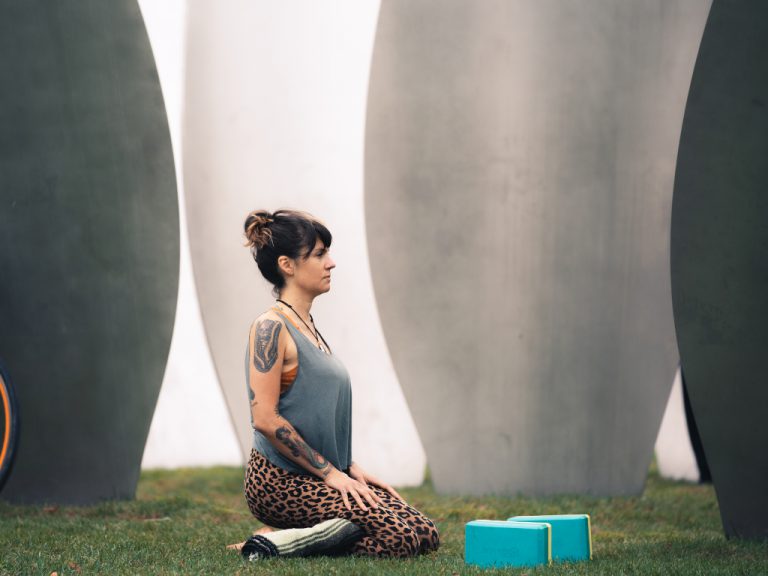
Calf Smashers
Cyclists’ calves tend to be tight.To help get out all those little knots you might not even realize you have, try this myofascial release. You will need a tightly rolled blanket or towel and a couple of blocks handy at either side of your mat.
- Come to a high kneeling position with your feet aligned behind you, toes untucked.
- Take your blanket or towel and place it behind the knees- as snuggly as it will fit.
- Gently begin to sink your hips back towards your feet. You may want to place blocks on either side of you to press into with your hands and keep some of your weight up off of the legs as you sit back
- This may or may not feel super intense! Take some deep, steady breaths in and out; try to stay with it for at least 10 rounds of breath.
- Come back to a high kneel, shift the blanket roll down your legs so that it’s across the belly of your calf muscle, and begin to shift your weight back once again.
- Again, focus on your breathing, and try to stay here for at least 10 breaths… You may like to rock slightly side to side, massaging out the fascia and muscle of the legs.
- Come back to a high kneel, slide the blanket down so that it lays at the base of the calf muscle, approximately across the middle of the lower third of your leg. Sit back and breathe… try to stay at least 10 breaths.
- Come back to a high kneel, slide the blanket down so that it lays across your Achilles/the lowest quarter of your leg, and sit back. Breathe…
- Come back to a high kneel; select whichever part of your leg that gave you the most intense sensation, and repeat there one last time.
- Finally, come back to a high kneel and ditch that blanket roll- you’re done here!
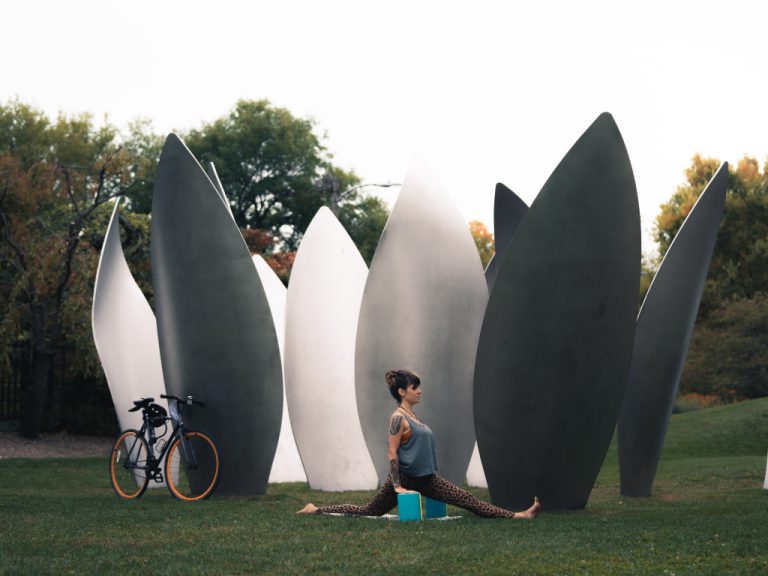
Low Lunge and Half Hanumanasana
Practicing Low Lunge and Half Hanumanasana provides a deep stretch into glutes, hips, quadriceps and hamstrings, which also tend to be tight in cyclists. These essential yoga postures are a must for any cycling yogi.
- Stand in Tadasana at the top of your mat.
- Step far back with the right foot, bend into the left knee and lower the right knee to the floor, keeping the right toes tucked.
- Bring the hands to blocks on either side of the left foot, bring your torso upright and shift your weight forward, lowering your hips and deepening the bend in your left knee. Pause for a round of breath.
- On an exhale, straighten your left leg as you shift your hips back towards your right heel,* bending forward to fold your torso over your outstretched left leg. Stay for a round of breath.
- Inhale, rebending the left knee and moving forward into low lunge.
- Exhale shift back, straightening the left leg, Half Hanumanasana.
- Repeat for a total of 10 repetitions, then switch to bring your right leg forward.
*Your hips likely will not come anywhere near your back foot- that is totally ok! Focus on keeping the hips squared to the front, vs allowing them to dip to one side as you flow in and out.
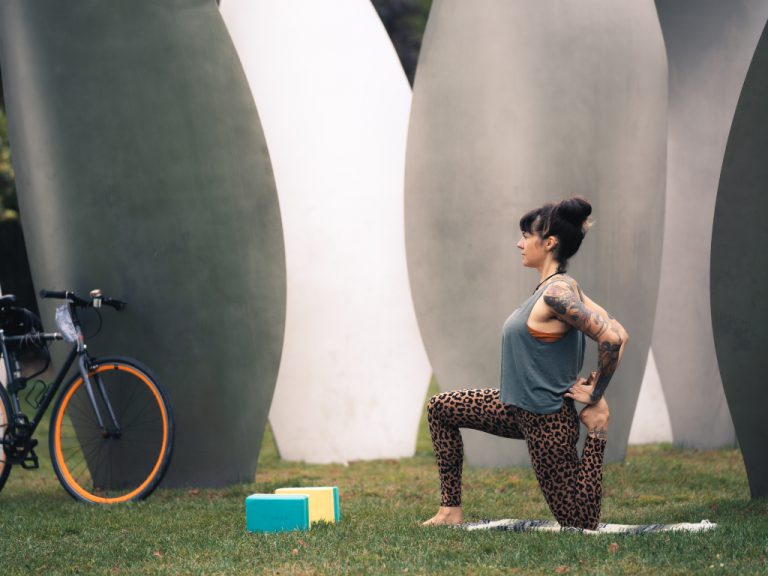
“King Arthur”
To help stretch tight quads after a ride, try this yoga pose. This is a pretty intense quadriceps stretch, so be sure to take it slowly and listen to your body! Have a folded over blanket or other cushioning available for your supporting knee.
- Come to kneeling on all fours, your feet towards and just touching the wall.
- Bring your right foot and shin up against the wall so that your toes point to the ceiling and your right knee is standing on the blanket.
- Step your left foot forward, making a 90-degree angle or box shape with your thigh and shin; shin perpendicular to the floor.
- Bring your hands to your left knee, find your balance, bend your right knee and begin bringing your hips & upper body back towards the wall.
- Practice for 10 breaths and switch sides.
If your quads are screaming, you may like to shift in and out of this posture, making it more dynamic. If you want to go deeper, flatten your back against the wall and bring your arms up overhead.
Yin Version of Bridge
To open along the front body:
- Lay on your back with your knees bent; feet flat on the floor.
- Press into your feet to lift your hips and slide a block underneath your sacrum, then lower yourself back down onto the block. The block should be on its lowest setting and run width-wise under the back of your pelvis.
- Slowly straighten one leg and then the other out long. You can leave your arms at your side or, if it’s available to you, bring them up overhead, perhaps clasping opposite elbows or wrists.
- Breath long and slow, inviting your front body to stretch and open. Stay here for two to five minutes.
- When you are ready to come out, gently lower your arms, rebend one leg at a time, lift your hips, remove the block and lower yourself gently back down. Pause here for a few rounds of breath.
- Slowly windshield wiper the knees side to side.
- Hug the knees briefly into your chest, rocking gently side to side, before returning to seated or stretching out for Savasana.
A few parting words on bicycle safety…
Hopefully, this yoga for cyclists sequence is helpful. As we wrap up, here’s your PSA on cycling safety.
- Please, always wear a helmet! It may not feel “cool” but what’s way less cool is spending the rest of your life with a traumatic brain injury- or worse!
- Use lights, not just at night but also at dawn & dusk, when the changing light can make it more difficult for drivers to see you. This Vont Scope Bike Light is affordable and has both front and back lights.
- Reflective stickers, a bell, or horn are all great for making yourself known. This Accmor Classic Bike Bell is affordable and comes in multiple colors.
- Obey traffic laws, and never assume that a driver will.
- Look out, especially around parked cars, for turning vehicles and suddenly opening doors!
Yoga for Cyclists Video with Erica

Erica Bentley, CYT500, IAYT300
Erica is a Yoga facilitator & practitioner who is passionate about bringing relevant, accessible practices to people from all walks of life. Through lived experience, Erica recognizes the opportunity Yoga provides to create great change within one’s self and community. She is a social justice activist and specializes in working with the incarcerated and folks in addiction & trauma recovery.
You can catch up with Erica at www.EricaBentleyYT.com
